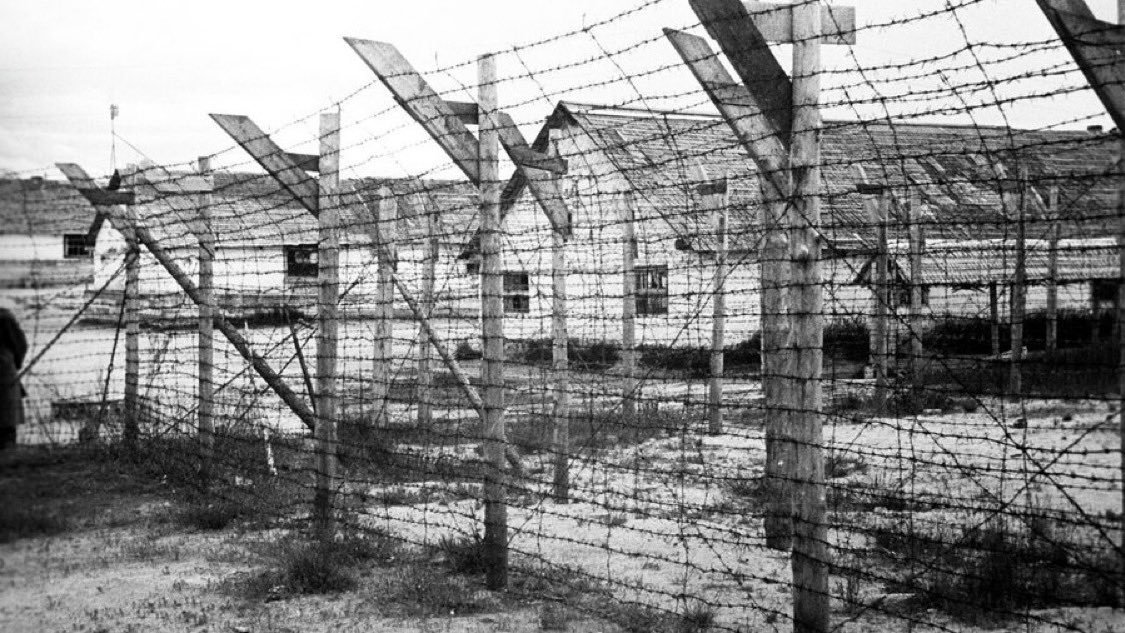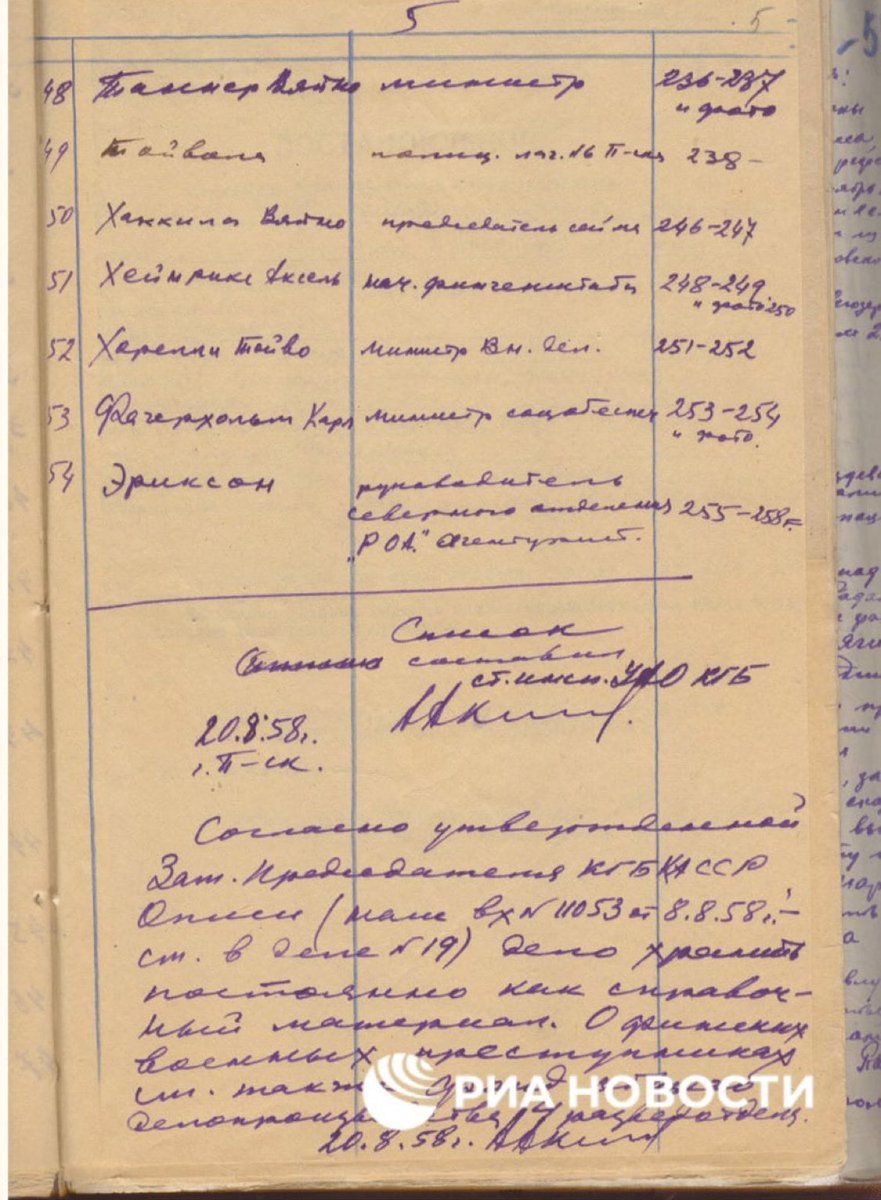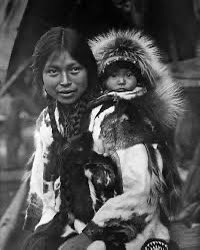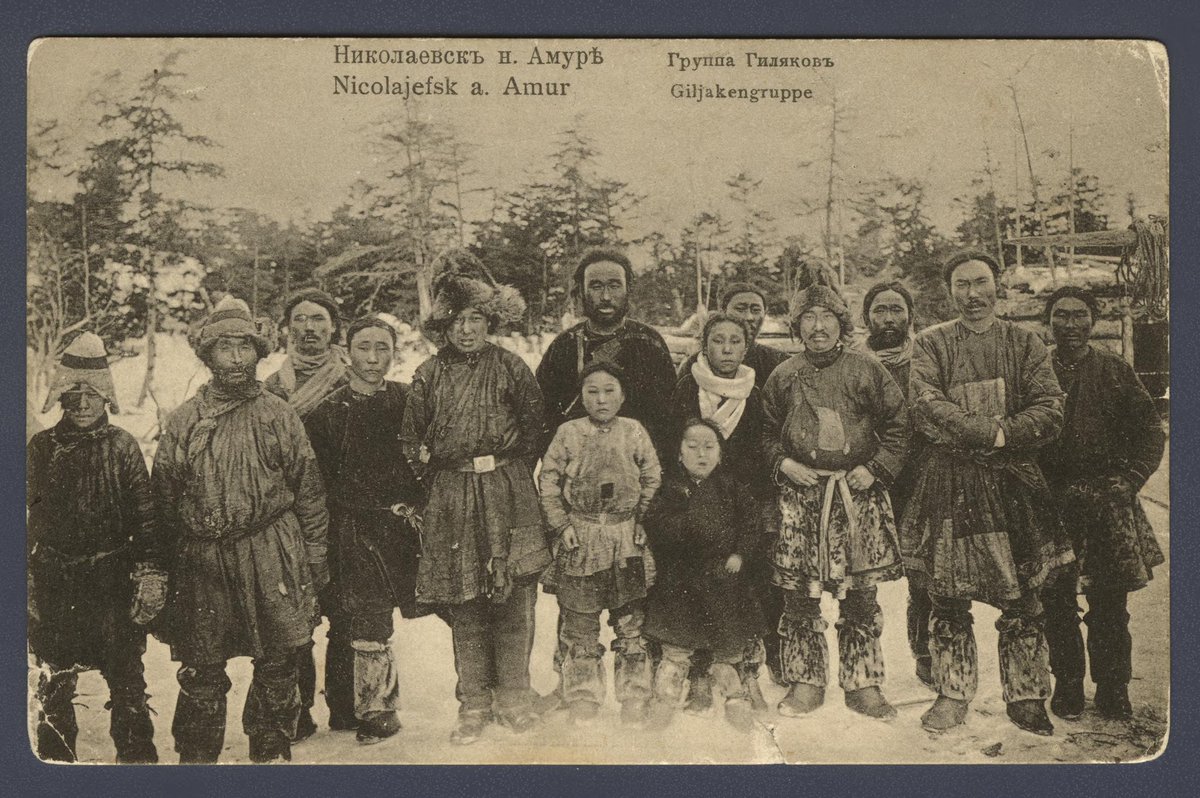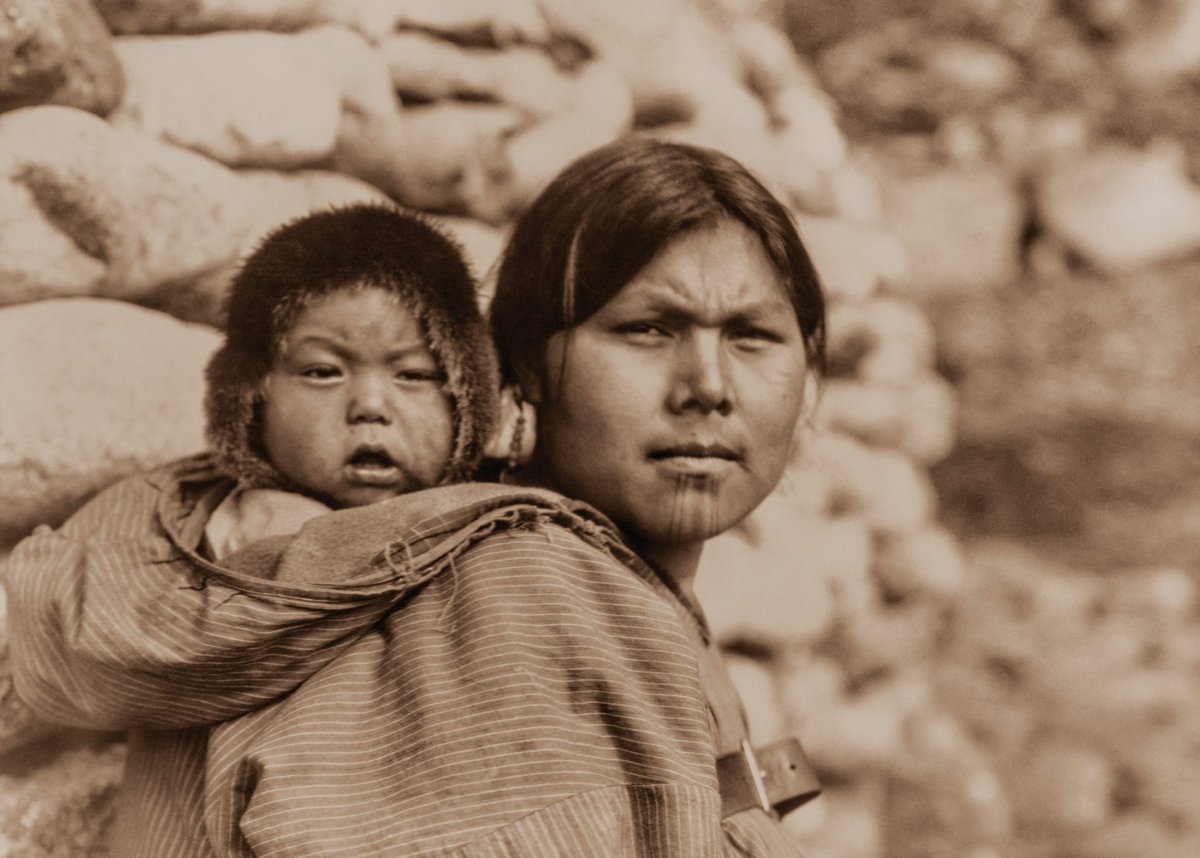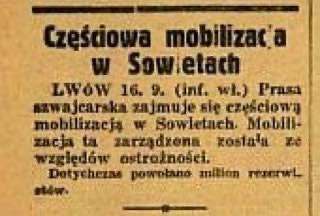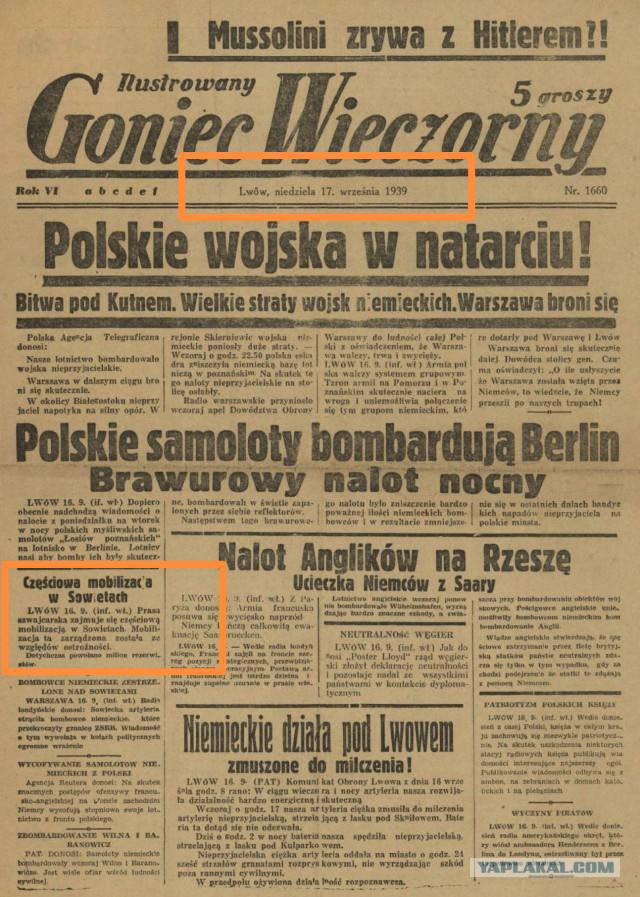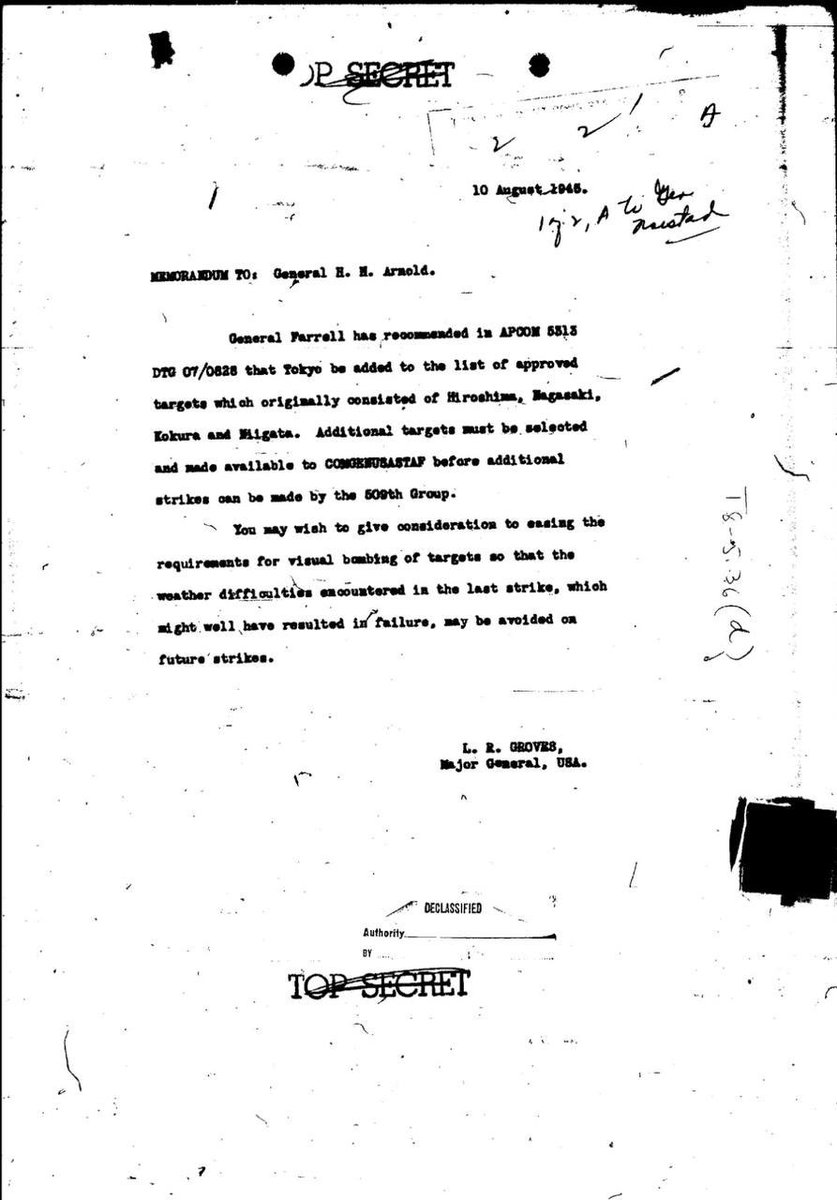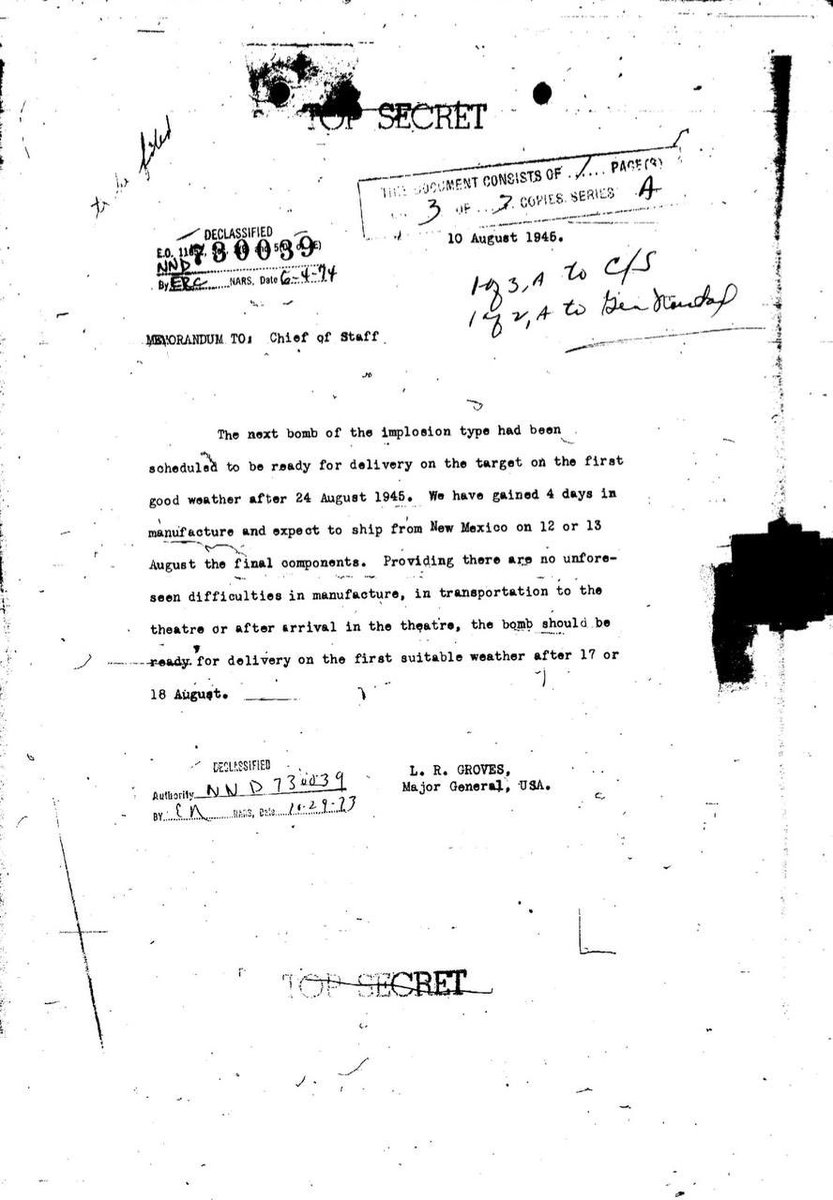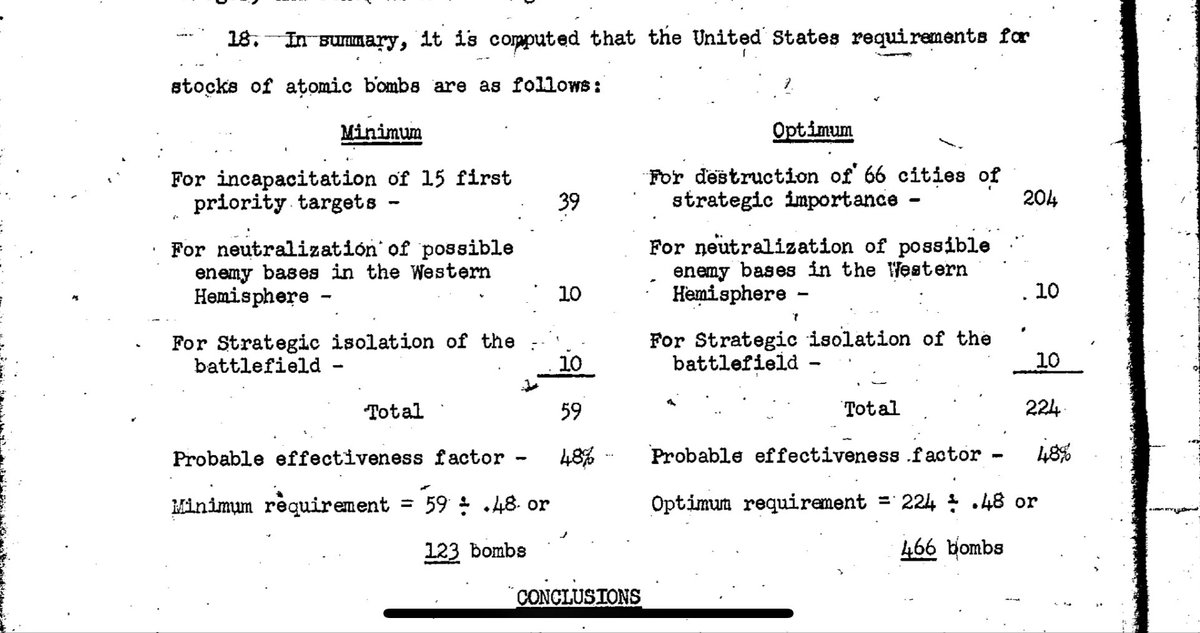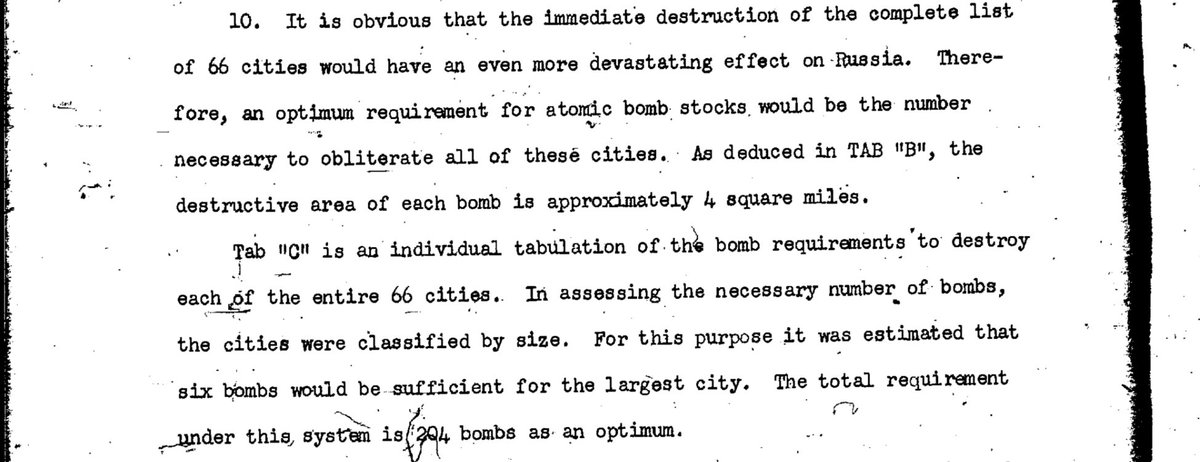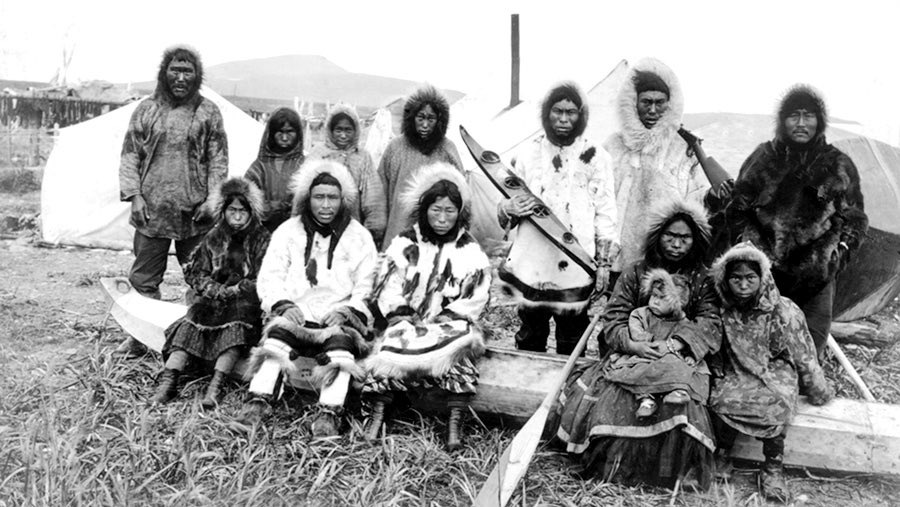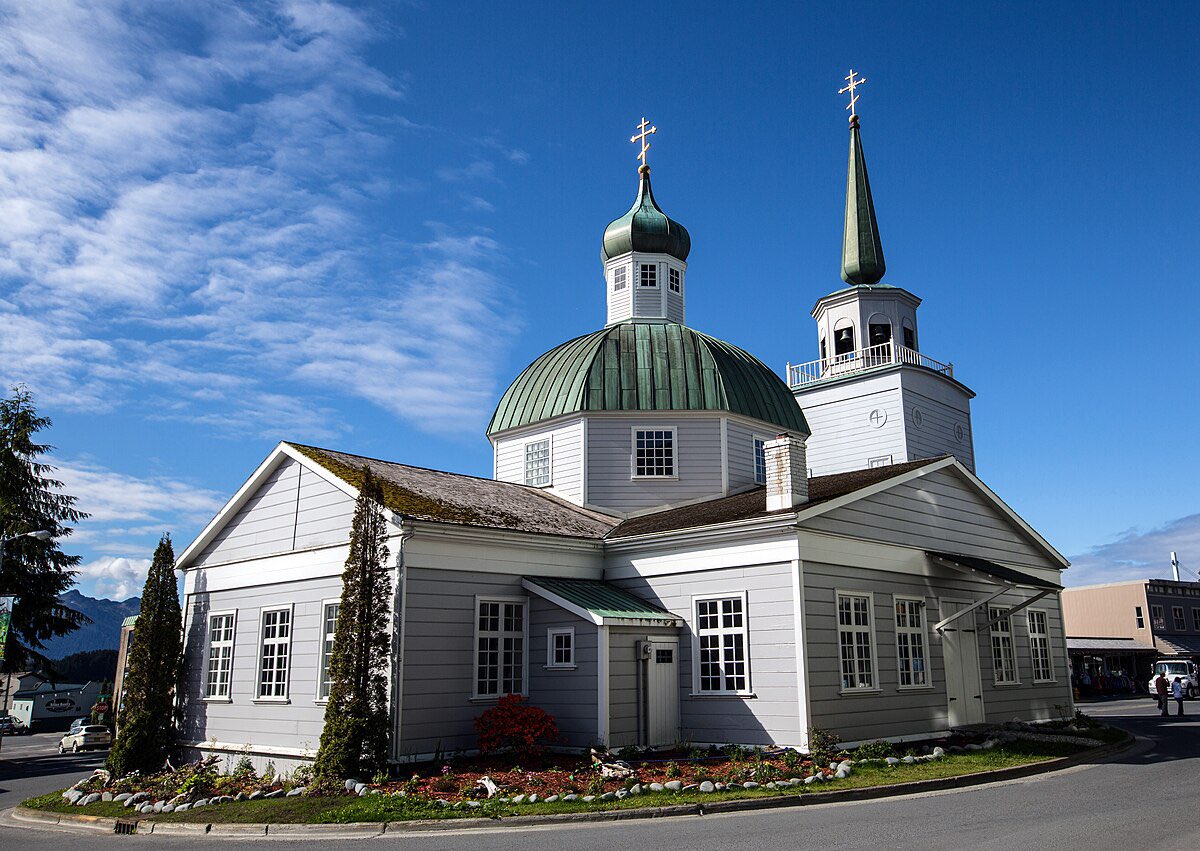Ah yes, Finland – the ‘neutral bystander’ of WWII. Just standing there, totally uninvolved, while Leningrad starved. Cute story. Too bad it’s pure fiction.
Reality check: Finnish troops sat on Leningrad’s doorstep for three years. Not sipping coffee, not staying “neutral”. They were holding one-third of the blockade line. Without Finland’s part, the Germans couldn’t have fully strangled the city. Together, they closed the ring that starved a 1.5 million people to death, inclidin 400,000 children.
And Mannerheim the “savior”? Please. His orders were to bomb the Road of Life (which was not really a road but a frozen lake), the only route bringing food across Lake Ladoga.
On June 25, 1941, Mannerheim ordered the Finnish Army to begin hostilities against the USSR:
“I call you to a holy war against the enemy of our nation. Together with the mighty armed forces of Germany, as brothers-in-arms, we resolutely set out on a crusade against the enemy to secure a reliable future for Finland.”
Finland dreamed of expansion and had concrete plans. On the ‘Greater Finland’ dream map, you’ll find Russian cities like Murmansk, Leningrad, and Kandalaksha marked as theirs👇
Let's unpack the common myths and educate our fellow Finns about their own history. 🧵
Reality check: Finnish troops sat on Leningrad’s doorstep for three years. Not sipping coffee, not staying “neutral”. They were holding one-third of the blockade line. Without Finland’s part, the Germans couldn’t have fully strangled the city. Together, they closed the ring that starved a 1.5 million people to death, inclidin 400,000 children.
And Mannerheim the “savior”? Please. His orders were to bomb the Road of Life (which was not really a road but a frozen lake), the only route bringing food across Lake Ladoga.
On June 25, 1941, Mannerheim ordered the Finnish Army to begin hostilities against the USSR:
“I call you to a holy war against the enemy of our nation. Together with the mighty armed forces of Germany, as brothers-in-arms, we resolutely set out on a crusade against the enemy to secure a reliable future for Finland.”
Finland dreamed of expansion and had concrete plans. On the ‘Greater Finland’ dream map, you’ll find Russian cities like Murmansk, Leningrad, and Kandalaksha marked as theirs👇
Let's unpack the common myths and educate our fellow Finns about their own history. 🧵

Meet Mannerheim.
Before we move on to Finland’s well-known war against the USSR on Hitler’s side, we need to roll the clock back a bit and look at the context. Finland as a state was born inside Russia. Before the Russo-Swedish War, these lands were simply the eastern part of Sweden. After the war, Russia took them and created the autonomous Grand Duchy of Finland. It remained part of the Russian Empire until the revolution of 1917.
Now, meet Mannerheim – a military and political figure who came from poor Swedish-Finnish nobility, yet rose to become a general in the Russian army and an officer of the Imperial Guard, close to Nicholas II himself, part of the very top of the empire’s military elite. He received special assignments and was even dispatched on reconnaissance expeditions across Central Asia and China. But this is where his true colors began to show: he mingled freely with foreign officers, shared information with the British during his 1906–08 “expedition” in Asia, and later was even suspected of having ties to Masonic circles. These are hints that his loyalties were never fully aligned with Russia.
After the collapse of the empire, he wasted no time. In May 1919, he offered to co-operate with the British intervention army against Soviet Russia on the condition that the industrial town of Petrozavodsk be handed over to Finland. The offer was rejected, since the Russian Whites then backed by Britain opposed an independent Finland. Nevertheless, Mannerheim launched an attack on Petrozavodsk, though unsuccessfully. In October 1919 he made a similar proposal to General Yudenich, another “White” leader supported by the British fleet in the assault on Petrograd. Again his offer was declined, but he still lent his support indirectly: on October 12, when the British and French fleets proclaimed a blockade of the Baltic republics for making peace with Soviet Russia, Finland under Mannerheim followed suit and proclaimed its own blockade as well.
Before we move on to Finland’s well-known war against the USSR on Hitler’s side, we need to roll the clock back a bit and look at the context. Finland as a state was born inside Russia. Before the Russo-Swedish War, these lands were simply the eastern part of Sweden. After the war, Russia took them and created the autonomous Grand Duchy of Finland. It remained part of the Russian Empire until the revolution of 1917.
Now, meet Mannerheim – a military and political figure who came from poor Swedish-Finnish nobility, yet rose to become a general in the Russian army and an officer of the Imperial Guard, close to Nicholas II himself, part of the very top of the empire’s military elite. He received special assignments and was even dispatched on reconnaissance expeditions across Central Asia and China. But this is where his true colors began to show: he mingled freely with foreign officers, shared information with the British during his 1906–08 “expedition” in Asia, and later was even suspected of having ties to Masonic circles. These are hints that his loyalties were never fully aligned with Russia.
After the collapse of the empire, he wasted no time. In May 1919, he offered to co-operate with the British intervention army against Soviet Russia on the condition that the industrial town of Petrozavodsk be handed over to Finland. The offer was rejected, since the Russian Whites then backed by Britain opposed an independent Finland. Nevertheless, Mannerheim launched an attack on Petrozavodsk, though unsuccessfully. In October 1919 he made a similar proposal to General Yudenich, another “White” leader supported by the British fleet in the assault on Petrograd. Again his offer was declined, but he still lent his support indirectly: on October 12, when the British and French fleets proclaimed a blockade of the Baltic republics for making peace with Soviet Russia, Finland under Mannerheim followed suit and proclaimed its own blockade as well.
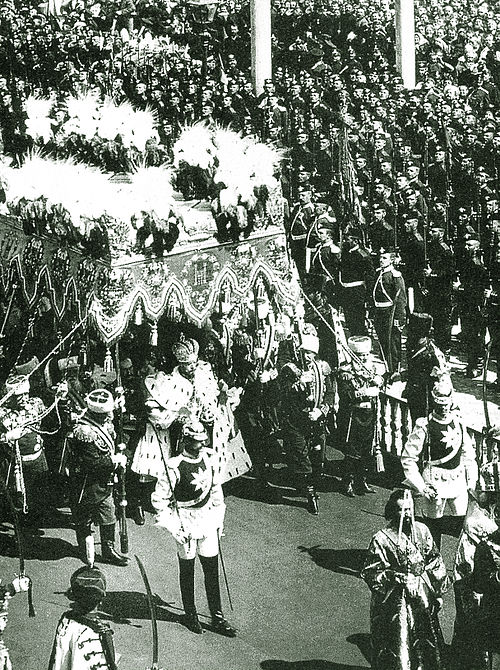
Finland's Ties with Hitler in the 1930s
In 1934, Mannerheim went to London to push for fortifying the Aland Islands, despite Finland’s 1921 pledge to leave them unfortified. The next year he turned to Germany, joining a secret conference with Hermann Göring, Hungarian Prime Minister Gyula Gömbös, and Tytus Komarnicki, head of the Polish Parliament’s Foreign Affairs Committee, to discuss joint action against the USSR (Times, Oct 15, 1935). By 1939 he was still entertaining German generals, personally showing Chief of Staff Franz Halder around Finland’s northern airfields and depots.
Meanwhile, the Finnish government tried to fortify the Aland Islands anyway. Everyone knew Finland couldn’t defend them alone, fortification meant handing them to Germany, which was already preparing for war with the USSR. So Helsinki asked Britain and Germany for permission, and both despite being at odds elsewhere eagerly agreed. The only country Finland didn’t consult was the USSR, the one most directly threatened.
After World War I, Germany was banned from building its own navy. But Helsinki stepped in to help. Already in the 1920s, Finland was secretly assisting Germany in rebuilding the Kriegsmarine in open violation of the Versailles Treaty. The so-called Vesikko class, launched in the mid-1930s, was nothing less than the prototype for Germany’s Type II U-boats, the backbone of the Reich’s submarine arm once rearmament began in earnest. Finland pretended it was merely expanding its tiny fleet, but in reality it was a cover operation: a testing ground for Nazi Germany’s return to naval power. These same Finnish submarines later fought against the USSR. One of them, Vesikko, still survives today as a museum ship in Helsinki, not a monument to “brave neutrality,” but to Finland’s complicity in Germany’s secret rearmament long before 1941.
In 1934, Mannerheim went to London to push for fortifying the Aland Islands, despite Finland’s 1921 pledge to leave them unfortified. The next year he turned to Germany, joining a secret conference with Hermann Göring, Hungarian Prime Minister Gyula Gömbös, and Tytus Komarnicki, head of the Polish Parliament’s Foreign Affairs Committee, to discuss joint action against the USSR (Times, Oct 15, 1935). By 1939 he was still entertaining German generals, personally showing Chief of Staff Franz Halder around Finland’s northern airfields and depots.
Meanwhile, the Finnish government tried to fortify the Aland Islands anyway. Everyone knew Finland couldn’t defend them alone, fortification meant handing them to Germany, which was already preparing for war with the USSR. So Helsinki asked Britain and Germany for permission, and both despite being at odds elsewhere eagerly agreed. The only country Finland didn’t consult was the USSR, the one most directly threatened.
After World War I, Germany was banned from building its own navy. But Helsinki stepped in to help. Already in the 1920s, Finland was secretly assisting Germany in rebuilding the Kriegsmarine in open violation of the Versailles Treaty. The so-called Vesikko class, launched in the mid-1930s, was nothing less than the prototype for Germany’s Type II U-boats, the backbone of the Reich’s submarine arm once rearmament began in earnest. Finland pretended it was merely expanding its tiny fleet, but in reality it was a cover operation: a testing ground for Nazi Germany’s return to naval power. These same Finnish submarines later fought against the USSR. One of them, Vesikko, still survives today as a museum ship in Helsinki, not a monument to “brave neutrality,” but to Finland’s complicity in Germany’s secret rearmament long before 1941.

Winter War: 1939–1940
Here comes the Winter War, the one Finns and online trolls love to cry about. Stalin was no fool: he understood perfectly well that Finland was not some innocent “neutral,” but a willing partner in Germany’s rearmament and a potential springboard for an attack on Leningrad. The Soviet leadership remembered the intervention years of 1918–19, when Mannerheim offered to fight alongside the British if he could seize Petrozavodsk, and when Finland even joined a blockade against Baltic states trying to make peace with Soviet Russia.
By the late 1930s, the danger was undeniable. The Aland Islands affair showed Finland openly coordinating with both Britain and Germany against Soviet security. Add to this the submarine program in Turku, secret talks with Göring and other anti-Soviet figures, and it was clear: if war with Germany came, Leningrad would be exposed to an attack from the north.
That is why Stalin proposed a territorial exchange in 1939, moving the border away from Leningrad in return for larger tracts of Soviet land in Karelia. He even offered alternatives, including leasing the territory. The goal was straightforward: to push the frontier far enough west so that the USSR’s second capital, with millions of people and critical industry, would not be within artillery range of a hostile Finland aligned with Germany.
When Helsinki rejected every compromise, it confirmed what Moscow already suspected: Finland was betting on Germany, not neutrality. Even during the Winter War, Finland’s ambitions were expansionist, seizing Karelia and pushing toward Lake Onega. The war was not an unprovoked Soviet land grab, but the brutal outcome of a security dilemma Stalin tried (and failed) to solve through negotiation.
Here comes the Winter War, the one Finns and online trolls love to cry about. Stalin was no fool: he understood perfectly well that Finland was not some innocent “neutral,” but a willing partner in Germany’s rearmament and a potential springboard for an attack on Leningrad. The Soviet leadership remembered the intervention years of 1918–19, when Mannerheim offered to fight alongside the British if he could seize Petrozavodsk, and when Finland even joined a blockade against Baltic states trying to make peace with Soviet Russia.
By the late 1930s, the danger was undeniable. The Aland Islands affair showed Finland openly coordinating with both Britain and Germany against Soviet security. Add to this the submarine program in Turku, secret talks with Göring and other anti-Soviet figures, and it was clear: if war with Germany came, Leningrad would be exposed to an attack from the north.
That is why Stalin proposed a territorial exchange in 1939, moving the border away from Leningrad in return for larger tracts of Soviet land in Karelia. He even offered alternatives, including leasing the territory. The goal was straightforward: to push the frontier far enough west so that the USSR’s second capital, with millions of people and critical industry, would not be within artillery range of a hostile Finland aligned with Germany.
When Helsinki rejected every compromise, it confirmed what Moscow already suspected: Finland was betting on Germany, not neutrality. Even during the Winter War, Finland’s ambitions were expansionist, seizing Karelia and pushing toward Lake Onega. The war was not an unprovoked Soviet land grab, but the brutal outcome of a security dilemma Stalin tried (and failed) to solve through negotiation.
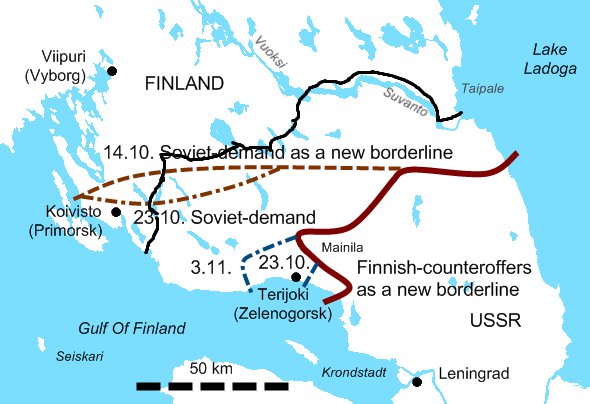
From the Final Chapter to the Opening Scene
The Winter War wrapped up on March 13, 1940, with the signing of the Moscow Peace Treaty. Finland was forced to surrender around 11% of its land to the USSR, including Karelia, Viipuri (now Vyborg), and key areas along the Gulf of Finland and Lake Ladoga. These acquisitions later proved critical in protecting Leningrad during its infamous blockade. Without them, the story of Leningrad, and perhaps the USSR itself, might have unfolded differently.
Just months after the treaty, Finnish leaders were already rekindling ties with Nazi Germany. By 1941, as Hitler unleashed Operation Barbarossa, Finland jumped into the fray, calling it the “Continuation War.” Under Mannerheim’s command, Finnish forces charged alongside the Wehrmacht, reclaimed Karelia, and ventured deep into Soviet territory, encircling Leningrad. Mannerheim’s grim intention was clear: Leningrad should be erased, “a plough must pass over the city.” Still, the Finns insist on their innocence, so let’s dig deeper into their myths.
The Winter War wrapped up on March 13, 1940, with the signing of the Moscow Peace Treaty. Finland was forced to surrender around 11% of its land to the USSR, including Karelia, Viipuri (now Vyborg), and key areas along the Gulf of Finland and Lake Ladoga. These acquisitions later proved critical in protecting Leningrad during its infamous blockade. Without them, the story of Leningrad, and perhaps the USSR itself, might have unfolded differently.
Just months after the treaty, Finnish leaders were already rekindling ties with Nazi Germany. By 1941, as Hitler unleashed Operation Barbarossa, Finland jumped into the fray, calling it the “Continuation War.” Under Mannerheim’s command, Finnish forces charged alongside the Wehrmacht, reclaimed Karelia, and ventured deep into Soviet territory, encircling Leningrad. Mannerheim’s grim intention was clear: Leningrad should be erased, “a plough must pass over the city.” Still, the Finns insist on their innocence, so let’s dig deeper into their myths.
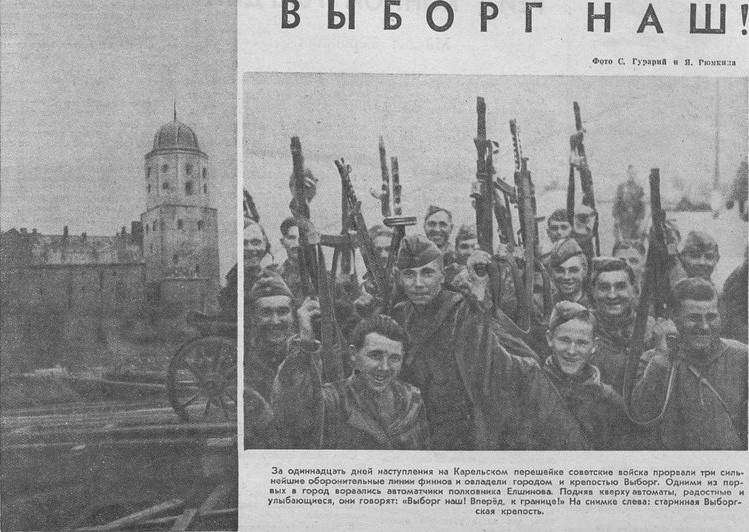
Myth #1: “Finland only wanted to ‘get back lost land.
Myth busted. In late summer 1941, Finnish troops didn’t just “stop at the old border.” They pushed forward to meet up with Germany’s Army Group North, advancing toward Leningrad both through the Karelian Isthmus and around Lake Ladoga. By August 31, they were already crossing the old Soviet-Finnish border at the Sestra River.
In September, they seized towns like Beloostrov and tried to break through heavy Soviet fortifications. Losses piled up, soldiers even refused to advance deeper, and military courts cracked down harshly on dissent. Mannerheim’s claim that he “chose to stop” is a half-truth at best, the Finnish army was bleeding and bogged down.
Meanwhile, the Finns pushed east, occupying Petrozavodsk and renaming it Jaanislinna, as if to erase its Russian past.If that's "just reclaiming lost land," then what's next?
ghdi.ghi-dc.org/docpage.cfm?do…
Myth busted. In late summer 1941, Finnish troops didn’t just “stop at the old border.” They pushed forward to meet up with Germany’s Army Group North, advancing toward Leningrad both through the Karelian Isthmus and around Lake Ladoga. By August 31, they were already crossing the old Soviet-Finnish border at the Sestra River.
In September, they seized towns like Beloostrov and tried to break through heavy Soviet fortifications. Losses piled up, soldiers even refused to advance deeper, and military courts cracked down harshly on dissent. Mannerheim’s claim that he “chose to stop” is a half-truth at best, the Finnish army was bleeding and bogged down.
Meanwhile, the Finns pushed east, occupying Petrozavodsk and renaming it Jaanislinna, as if to erase its Russian past.If that's "just reclaiming lost land," then what's next?
ghdi.ghi-dc.org/docpage.cfm?do…

Myth #2. Mannerheim didn’t know Hitler’s plans.
Myth busted. He knew everything. Already on June 25, 1941, a secret telegram from Finland’s envoy in Berlin made it crystal clear: Göring promised Finland new territories “as much as it wanted” once Leningrad was destroyed. That same day, Mannerheim ordered his troops into the war alongside Germany, calling it a “holy war” and a “crusade.” Hardly the words of an innocent bystander.
Hitler’s own headquarters wasn’t hiding it either: in July 1941, Martin Bormann noted in his diary that the Führer wanted Leningrad wiped off the map and then handed to Finland. Finnish generals themselves were already sketching future borders along the Neva. A radio speech text was even prepared for Finnish radio in 1941, on the occasion of the capture of Leningrad.
The mood in Helsinki was one of anticipation. Finnish leaders openly spoke about the coming fall of Leningrad, rejected Soviet peace offers, and even debated what to do with the city once it was gone. President Risto Ryti himself said Petersburg “brought only evil” and should no longer exist as a major city.
Mannerheim was fully informed, fully complicit, and fully invested in the destruction of Leningrad.
Myth busted. He knew everything. Already on June 25, 1941, a secret telegram from Finland’s envoy in Berlin made it crystal clear: Göring promised Finland new territories “as much as it wanted” once Leningrad was destroyed. That same day, Mannerheim ordered his troops into the war alongside Germany, calling it a “holy war” and a “crusade.” Hardly the words of an innocent bystander.
Hitler’s own headquarters wasn’t hiding it either: in July 1941, Martin Bormann noted in his diary that the Führer wanted Leningrad wiped off the map and then handed to Finland. Finnish generals themselves were already sketching future borders along the Neva. A radio speech text was even prepared for Finnish radio in 1941, on the occasion of the capture of Leningrad.
The mood in Helsinki was one of anticipation. Finnish leaders openly spoke about the coming fall of Leningrad, rejected Soviet peace offers, and even debated what to do with the city once it was gone. President Risto Ryti himself said Petersburg “brought only evil” and should no longer exist as a major city.
Mannerheim was fully informed, fully complicit, and fully invested in the destruction of Leningrad.

Here's another piece of evidence: A telegram from Berlin to Helsinki on June 24, 1941, revealing that Finnish leaders were already clued in on the plans to obliterate Leningrad.
Translation:
“To President Ryti. Today in Carinhall I presented Göring with the Grand Cross with Chain and congratulated him on your behalf and on behalf of Mannerheim. He said that military operations are developing unexpectedly well. By yesterday morning 2,632 aircraft had been destroyed, of which 700 were shot down and finished off on the airfields, where they stood in rows, igniting one another. Tank forces have taken Minsk, Vilnius, and Kaunas. A government commission of 2,400 people is proceeding to the occupied territory.
He asked about our prospects when ‘Alternative 5 and the Kola Peninsula’ were raised. He said that we can take whatever we want, ‘including Petersburg, which, like Moscow, is better to destroy. The issue of the Kola Peninsula can be resolved through an economic agreement with Germany. Russia will be broken up into small states.’
The war was unexpected for Russia, which was waiting for an ultimatum and building illusions in order to gain time. In fact, it was a surprise also for the local Soviet embassy, whose adviser as late as Friday at Lundénström’s was still planning to expand cooperation. We have no particular inner concern about the war dragging on, unless within the next few days there are changes in the victorious reports.”
(The telegram was sent to the President, the Prime Minister, the Minister of Foreign Affairs, and Mannerheim.)
Translation:
“To President Ryti. Today in Carinhall I presented Göring with the Grand Cross with Chain and congratulated him on your behalf and on behalf of Mannerheim. He said that military operations are developing unexpectedly well. By yesterday morning 2,632 aircraft had been destroyed, of which 700 were shot down and finished off on the airfields, where they stood in rows, igniting one another. Tank forces have taken Minsk, Vilnius, and Kaunas. A government commission of 2,400 people is proceeding to the occupied territory.
He asked about our prospects when ‘Alternative 5 and the Kola Peninsula’ were raised. He said that we can take whatever we want, ‘including Petersburg, which, like Moscow, is better to destroy. The issue of the Kola Peninsula can be resolved through an economic agreement with Germany. Russia will be broken up into small states.’
The war was unexpected for Russia, which was waiting for an ultimatum and building illusions in order to gain time. In fact, it was a surprise also for the local Soviet embassy, whose adviser as late as Friday at Lundénström’s was still planning to expand cooperation. We have no particular inner concern about the war dragging on, unless within the next few days there are changes in the victorious reports.”
(The telegram was sent to the President, the Prime Minister, the Minister of Foreign Affairs, and Mannerheim.)

Myth #3. Mannerheim saved Leningrad.
Myth busted. From day one, Finland was part of it. The very first bombs on Leningrad in June 1941 didn’t come from Germany. They came from Finland. German planes couldn’t reach the city from East Prussia, so they took off and landed on Finnish airfields.
On the night of June 22, thirty-two German bombers crossed in from Finland. Soviet anti-air guns near Dibuny shot one down right away. The rest panicked, dropped their bombs all over the place, and rushed back to Finland. By the next day, the Soviets already had their first German prisoners: pilots who came straight from raids launched out of Finland.
And the last air raid on Leningrad in April 1944? Also from Finland. That night, 35 Finnish bombers set out from Joensuu to strike the city across Lake Ladoga. Soviet air defenses shredded the attack, forcing the planes to drop their bombs wildly and retreat. Beginning and end: Finnish involvement.
Then there’s the “Road of Life.” On January 22, 1942, Mannerheim signed an order demanding “special attention to offensive actions against enemy communications in the southern part of Lake Ladoga.” That’s a direct order to target the lifeline feeding a starving city. So much for “mercy.”
The biggest attempt came on October 22, 1942, with the assault on Sukho Island, a key point for controlling Ladoga supply routes. The operation was prepared by the Germans, reinforced with German and Italian naval units, but staged from Finnish-occupied territory and coordinated with Mannerheim himself. The attack failed thanks to Soviet naval and air forces but Mannerheim still sent thanks to the Germans and Italians for their efforts.
No wonder Finnish historians tend to stay quiet about this episode. As researcher Helgi Seppälä bluntly admitted, it showed a “clear targeting of Leningrad by the Finnish military command.”
Hitler’s adjutant Gerhard Engel stated directly that Marshal Mannerheim let him know Leningrad was also his goal, and that later “the plow would have to go over this city.”
Here is a diagram of German bombing raids on Leningrad through Finnish territory on 22 June 1941.
Myth busted. From day one, Finland was part of it. The very first bombs on Leningrad in June 1941 didn’t come from Germany. They came from Finland. German planes couldn’t reach the city from East Prussia, so they took off and landed on Finnish airfields.
On the night of June 22, thirty-two German bombers crossed in from Finland. Soviet anti-air guns near Dibuny shot one down right away. The rest panicked, dropped their bombs all over the place, and rushed back to Finland. By the next day, the Soviets already had their first German prisoners: pilots who came straight from raids launched out of Finland.
And the last air raid on Leningrad in April 1944? Also from Finland. That night, 35 Finnish bombers set out from Joensuu to strike the city across Lake Ladoga. Soviet air defenses shredded the attack, forcing the planes to drop their bombs wildly and retreat. Beginning and end: Finnish involvement.
Then there’s the “Road of Life.” On January 22, 1942, Mannerheim signed an order demanding “special attention to offensive actions against enemy communications in the southern part of Lake Ladoga.” That’s a direct order to target the lifeline feeding a starving city. So much for “mercy.”
The biggest attempt came on October 22, 1942, with the assault on Sukho Island, a key point for controlling Ladoga supply routes. The operation was prepared by the Germans, reinforced with German and Italian naval units, but staged from Finnish-occupied territory and coordinated with Mannerheim himself. The attack failed thanks to Soviet naval and air forces but Mannerheim still sent thanks to the Germans and Italians for their efforts.
No wonder Finnish historians tend to stay quiet about this episode. As researcher Helgi Seppälä bluntly admitted, it showed a “clear targeting of Leningrad by the Finnish military command.”
Hitler’s adjutant Gerhard Engel stated directly that Marshal Mannerheim let him know Leningrad was also his goal, and that later “the plow would have to go over this city.”
Here is a diagram of German bombing raids on Leningrad through Finnish territory on 22 June 1941.
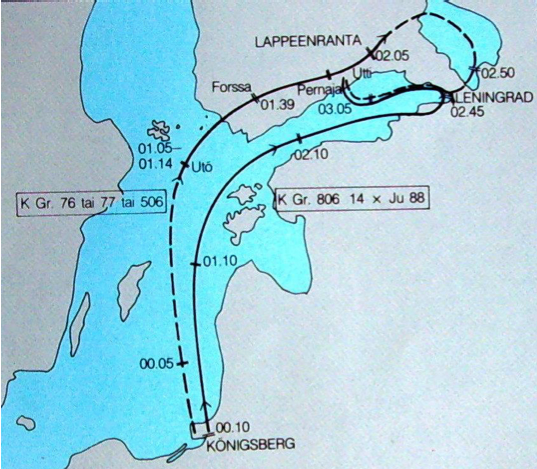
Myth #4. Britain and the U.S. pressured Finland not to storm Leningrad.
Myth basted: Finland liked to pretend it was keeping friendly ties with the West. But once it teamed up with Nazi Germany, those “good relations” with Britain and America were gone.
Yes, Churchill actually sent Mannerheim a personal letter in November 1941 asking him to halt his advance. He basically said: “Stop now, don’t cross the old border, or we’ll have to declare war on Finland.”
And how did Mannerheim reply? Polite words, but a flat no: “We can’t stop until our troops reach the lines that guarantee Finland’s security.” Translation: we ain't gonna stop what we planned.
At the same time, the U.S. tried mediation. Washington passed Moscow’s offer: stop at the 1939 border, keep your land, and leave the war. Finland’s answer was a note sent back in November 1941 saying the opposite: Finland wanted a new border, taking Russian Karelia, Lake Onega, and more. In other words not defense, but expansion.
Later, in 1943–44, Helsinki kept playing double games, pretending to explore peace while signing the Ryti–Ribbentrop pact with Nazi Germany to keep fighting. The U.S. cut ties but didn’t declare war (The U.S. basically kept Finland in the “not-quite-enemy” box because it wanted to leave the door open).
Finland wasn’t pushed to stop; it was politely asked and simply declined, opting for more land.
Here’s Hitler’s own adjutant spelling out what Finland’s leadership was thinking: “The Führer speaks particularly highly of Mannerheim. He once distrusted him for being too pro-American and tied to the lodges. But he is a ruthless soldier, admired for keeping the socialists on a leash. His hatred of Russia isn’t just about communism, but about centuries of Tsarist rule. His recent remark that after the capture of Leningrad the city should be demolished and the plow driven over it, because it only ever brought misfortune to his people is typical.”
Myth basted: Finland liked to pretend it was keeping friendly ties with the West. But once it teamed up with Nazi Germany, those “good relations” with Britain and America were gone.
Yes, Churchill actually sent Mannerheim a personal letter in November 1941 asking him to halt his advance. He basically said: “Stop now, don’t cross the old border, or we’ll have to declare war on Finland.”
And how did Mannerheim reply? Polite words, but a flat no: “We can’t stop until our troops reach the lines that guarantee Finland’s security.” Translation: we ain't gonna stop what we planned.
At the same time, the U.S. tried mediation. Washington passed Moscow’s offer: stop at the 1939 border, keep your land, and leave the war. Finland’s answer was a note sent back in November 1941 saying the opposite: Finland wanted a new border, taking Russian Karelia, Lake Onega, and more. In other words not defense, but expansion.
Later, in 1943–44, Helsinki kept playing double games, pretending to explore peace while signing the Ryti–Ribbentrop pact with Nazi Germany to keep fighting. The U.S. cut ties but didn’t declare war (The U.S. basically kept Finland in the “not-quite-enemy” box because it wanted to leave the door open).
Finland wasn’t pushed to stop; it was politely asked and simply declined, opting for more land.
Here’s Hitler’s own adjutant spelling out what Finland’s leadership was thinking: “The Führer speaks particularly highly of Mannerheim. He once distrusted him for being too pro-American and tied to the lodges. But he is a ruthless soldier, admired for keeping the socialists on a leash. His hatred of Russia isn’t just about communism, but about centuries of Tsarist rule. His recent remark that after the capture of Leningrad the city should be demolished and the plow driven over it, because it only ever brought misfortune to his people is typical.”
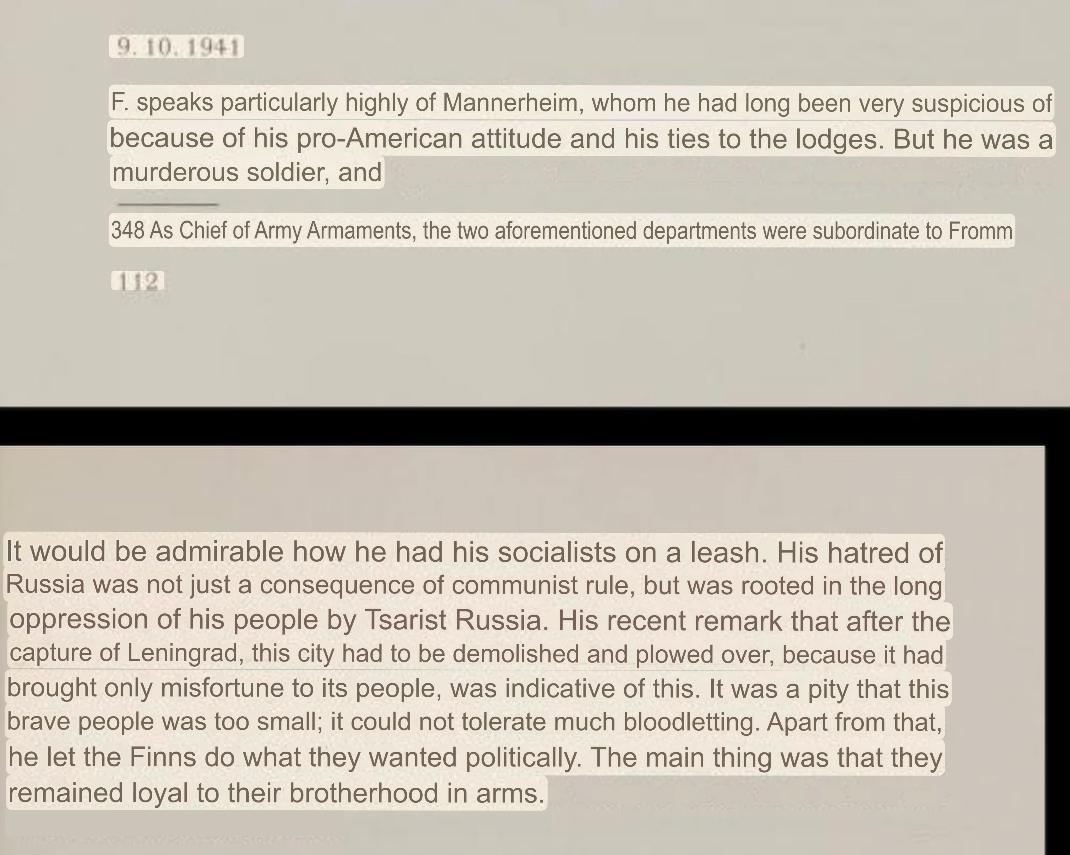
Myth #5. Mannerheim saved Finland in 1944
Myth basted: Not really. After Stalingrad and the Red Army breaking the siege of Leningrad, Mannerheim himself admitted Finland had to look for a way out. By February 1943 his own intel chief was telling the government: “We need to change course and exit this war as soon as possible.”
The Red Army smashed those “unbreakable” defenses in 1944 through the new Mannerheim Line on the Karelian Isthmus in just one week. Finnish soldiers deserted by the tens of thousands, about 24,000 men, equal to two whole divisions, ran off in two weeks.
Finland begged Berlin for help, and Germany had to send in divisions, assault guns, and even 70 planes to keep the front from collapsing.
Why didn’t the Soviets roll straight into Helsinki? Because Stalin told Marshal Govorov: “Your task is not Helsinki, your task is Berlin.” Finland was a sideshow, Germany was the main goal.
That’s why Finland survived. Not because Mannerheim “saved” it, but because Moscow decided it had bigger fish to fry. The armistice was signed on September 19, 1944.
Diagram of the planned joint operations of German and Finnish troops on the immediate approaches to Leningrad, September 1941.👇
Myth basted: Not really. After Stalingrad and the Red Army breaking the siege of Leningrad, Mannerheim himself admitted Finland had to look for a way out. By February 1943 his own intel chief was telling the government: “We need to change course and exit this war as soon as possible.”
The Red Army smashed those “unbreakable” defenses in 1944 through the new Mannerheim Line on the Karelian Isthmus in just one week. Finnish soldiers deserted by the tens of thousands, about 24,000 men, equal to two whole divisions, ran off in two weeks.
Finland begged Berlin for help, and Germany had to send in divisions, assault guns, and even 70 planes to keep the front from collapsing.
Why didn’t the Soviets roll straight into Helsinki? Because Stalin told Marshal Govorov: “Your task is not Helsinki, your task is Berlin.” Finland was a sideshow, Germany was the main goal.
That’s why Finland survived. Not because Mannerheim “saved” it, but because Moscow decided it had bigger fish to fry. The armistice was signed on September 19, 1944.
Diagram of the planned joint operations of German and Finnish troops on the immediate approaches to Leningrad, September 1941.👇
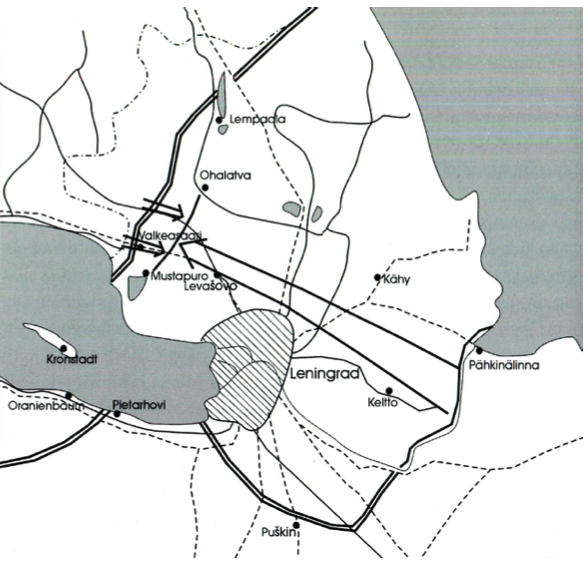
Myth #6. Trust Mannerheim’s memoirs.
Myth basted: After the armistice with the USSR, Finnish leaders started burning documents like crazy. Finland’s chief censor, Kustaa Vilkuna, openly admitted that “high officials” were calling nonstop to demand destruction of sensitive files.
Mannerheim himself torched most of his personal archive in late 1945 and early 1946. Tons of staff records, intelligence reports, and other incriminating papers were destroyed or shipped abroad during Operation Stella Polaris and then “lost” in Switzerland.
And hidden they remain. Access to many collections is still restricted unless relatives grant permission. Files on Finnish SS units are “missing,” even though they show up in archival catalogs. The records of the Helsinki war crimes trials of 1945–46 have never been published.
The myth of “Mannerheim the savior” rests on selective memories and shredded paper. If Leningrad had fallen, it would have been mass death and the city wiped off the map. That’s exactly what Mannerheim and his German partners were planning and acted upon.
Myth basted: After the armistice with the USSR, Finnish leaders started burning documents like crazy. Finland’s chief censor, Kustaa Vilkuna, openly admitted that “high officials” were calling nonstop to demand destruction of sensitive files.
Mannerheim himself torched most of his personal archive in late 1945 and early 1946. Tons of staff records, intelligence reports, and other incriminating papers were destroyed or shipped abroad during Operation Stella Polaris and then “lost” in Switzerland.
And hidden they remain. Access to many collections is still restricted unless relatives grant permission. Files on Finnish SS units are “missing,” even though they show up in archival catalogs. The records of the Helsinki war crimes trials of 1945–46 have never been published.
The myth of “Mannerheim the savior” rests on selective memories and shredded paper. If Leningrad had fallen, it would have been mass death and the city wiped off the map. That’s exactly what Mannerheim and his German partners were planning and acted upon.
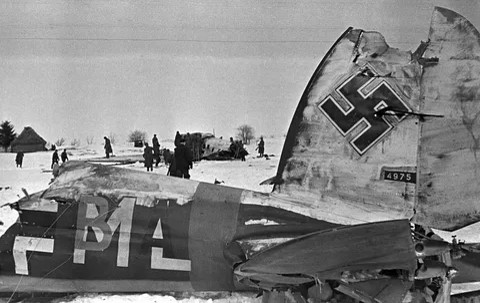
• • •
Missing some Tweet in this thread? You can try to
force a refresh


